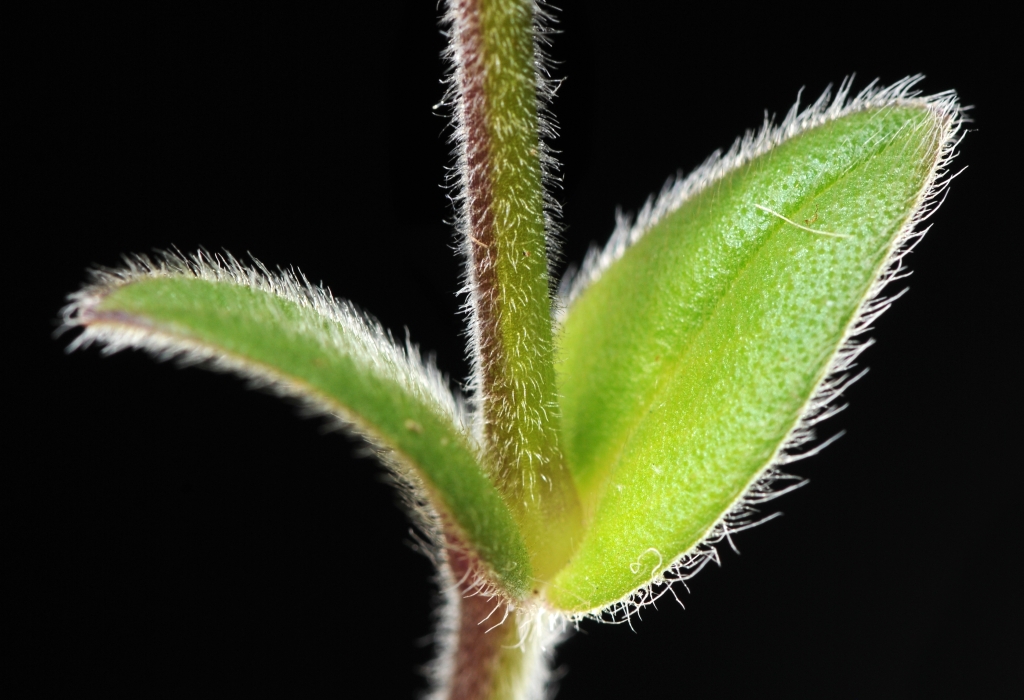Cerastium vulgare
Hartm. Common Mouse-ear ChickweedPerennial with usually fibrous roots; hairs spreading or more or less reflexed, eglandular (rarely also with sparse glandular) hairs. Stems 5–50 cm long. Leaves 10–25 mm long, 3–8 mm wide; basal leaves oblanceolate, subsessile, obtuse, often with axillary sterile shoots; stem leaves sessile, elliptic to oblong, obtuse to subacute. Inflorescence dense, becoming lax in fruit; margins of upper bracts moderately scarious. Flowers 5-merous; mature pedicels 1–2 times calyx length; calyx eglandular-pilose, sepals ovate to lanceolate, 4–7 mm long, margins narrowly scarious; petals shorter to slightly longer than sepals, c. one-third bifid; styles 5. Capsule curved, (7–)9–12 mm long; seeds reddish-brown, 0.4–0.7 mm diam., coarsely tuberculate. Flowers Nov.–Mar.
GleP, VVP, VRiv, GipP, WaP, Gold, CVU, NIS, EGL, EGU, WPro, HSF, HNF, OtR, Strz, MonT, HFE, VAlp. Also naturalised WA, Qld, NSW, Tas. Native to temperate Northern Hemisphere and Africa. A common and widespread weed of cultivation, lawns and waste ground, occasionally invading natural communities.
Cerastium vulgare is very close to Cerastium fontanum, which has been recorded at Macquarie Island, and in New South Wales. However, there is no concensus of opinion between European botanists on the Cerastium fontanum complex, and it is not clear if C. fontanum is a separate taxon or should be included in C. vulgare. Cerastium holosteoides Fries has frequently been synonymized with C. fontanum subsp. triviale (= C. vulgare Hartm.) by European authors (e.g. Jalas 1963, Greuter et al. 1984), but others consider them reasonably distinct, at least at subspecific rank (e.g. Salman et al. 1977a, 1977b). All Victorian material seen so far equates closely with the latter taxon, and is placed here under the correct name for the species s. str.
Adams, L.G. (1996). Caryophyllaceae. In: Walsh, N.G.; Entwisle, T.J., Flora of Victoria Vol. 3, Dicotyledons Winteraceae to Myrtaceae, pp. 228–271. Inkata Press, Melbourne.
 Spinning
Spinning


